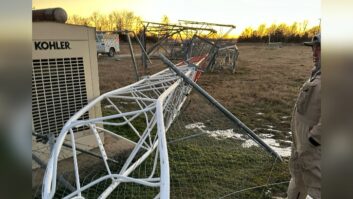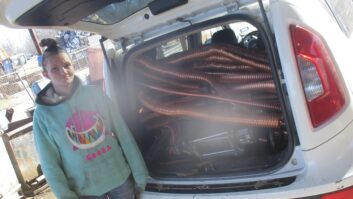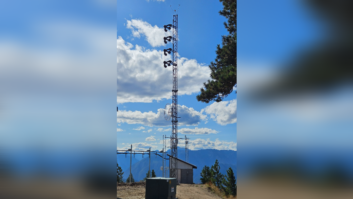The recent aviation accident that resulted in the destruction of the tower at KFI(AM) can only be described as a tragedy. Two lives were lost when a rented Cessna 182 hit the tower during a landing approach to the Fullerton Municipal Airport in California. The 57-year-old tower fell onto itself, with the top of the structure landing about 20 feet away from the base.
The KFI tower was a piece of broadcast history, dating to 1947. Reaching 760 feet above ground level, it was a significant local landmark, recalling an era when clear-channel AM stations were the kings of the broadcasting world. The tower was approximately one-half wavelength at KFI’s operating frequency of 640 kHz and provided a signal that reached hundreds of miles. It is hard not to feel some awe at the longevity of such a tall tower, which was built just after the end of World War II when radio broadcasting was poised to explode in its reach and number of outlets.
As has happened at many historical AM sites, the once-quiet area surrounding the KFI tower had become a maze of commercial buildings and parking lots. Miraculously, only minor damage occurred to one of these nearby buildings, in spite of the complete collapse.
After the accident, we heard murmurs of a need to add further regulations restricting towers in an effort to reduce the chance of future accidents. Adding strobe lights or even re-siting towers that are too close to airports was suggested.
This is understandable, as no one wants to see such a needless loss of life repeated. But it should be remembered that this tower had been in this location for 57 years of safe coexistence with the nearby airport. It is also important to keep in mind that aircraft pilots are not simply members of the general public, ignorant of the hazards of aviation; they are highly trained in safety procedures. The KFI tower was marked clearly on aviation maps for pilot flight plans and used widely as a navigation aid.
Radio broadcasters already are under strict regulations regarding the maintenance and siting of towers near airports, including the need for special marking and lighting. These marking systems are expensive to install and require ongoing maintenance. Early reports indicate that the FAA recommended safety requirements for station KFI were met at the time of the accident. In spite of this, and in full daylight, the tragedy occurred. The National Transportation Safety Board is investigating the accident and will report on the causes in a few months.
We are all lessened by this tragedy. But we must not overreact with needless regulation that may not, in the end, provide much additional safety.
— RW












